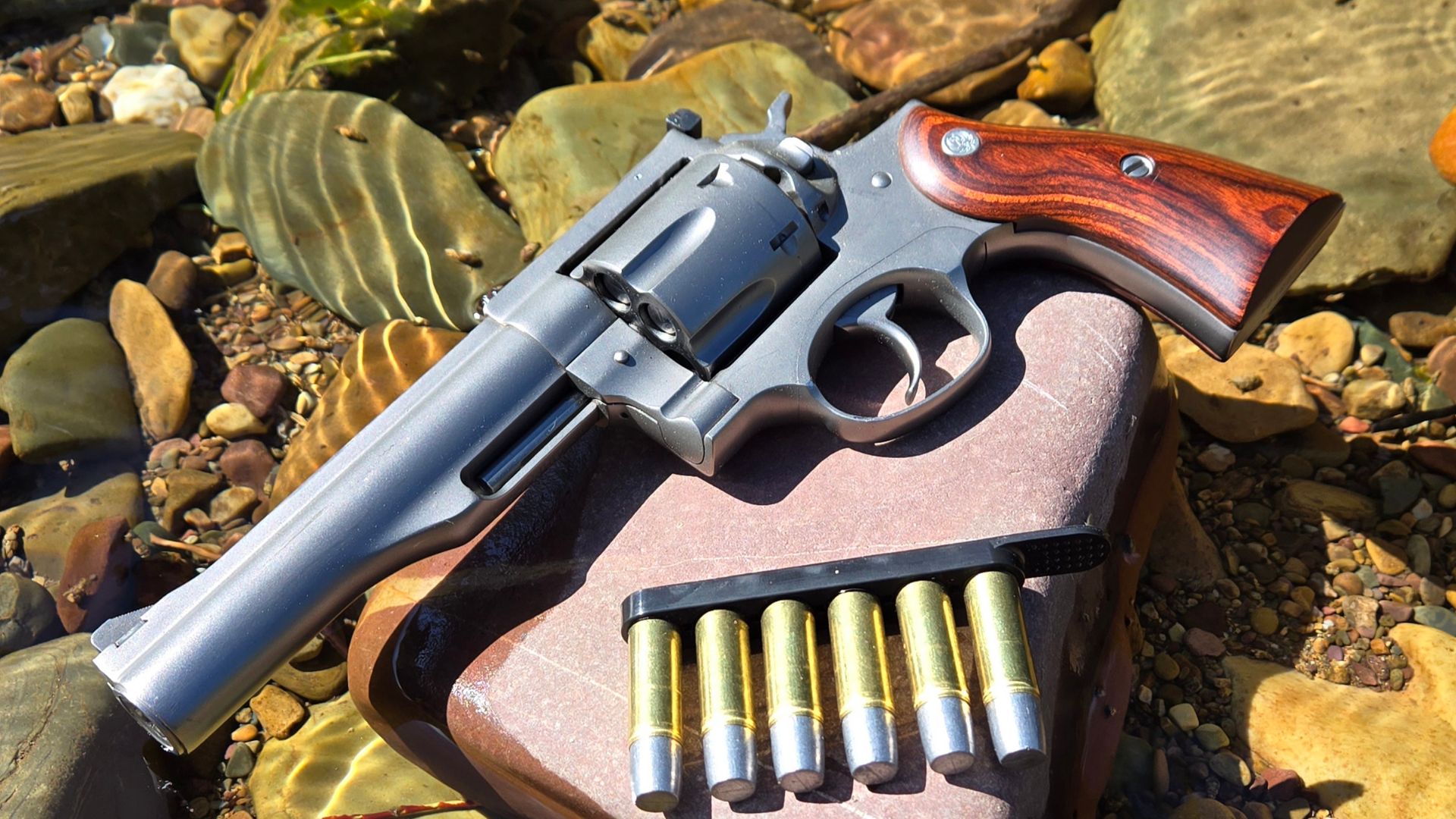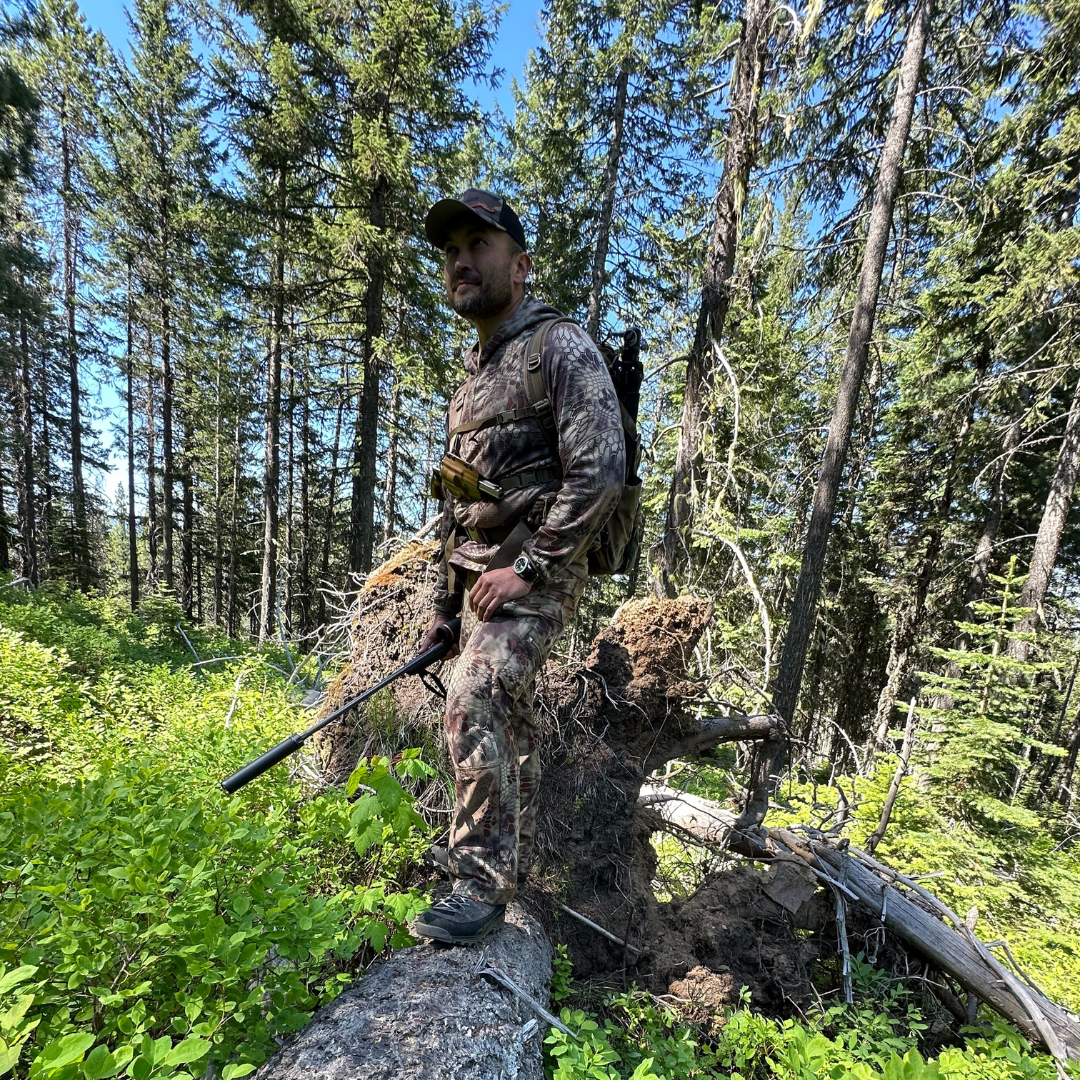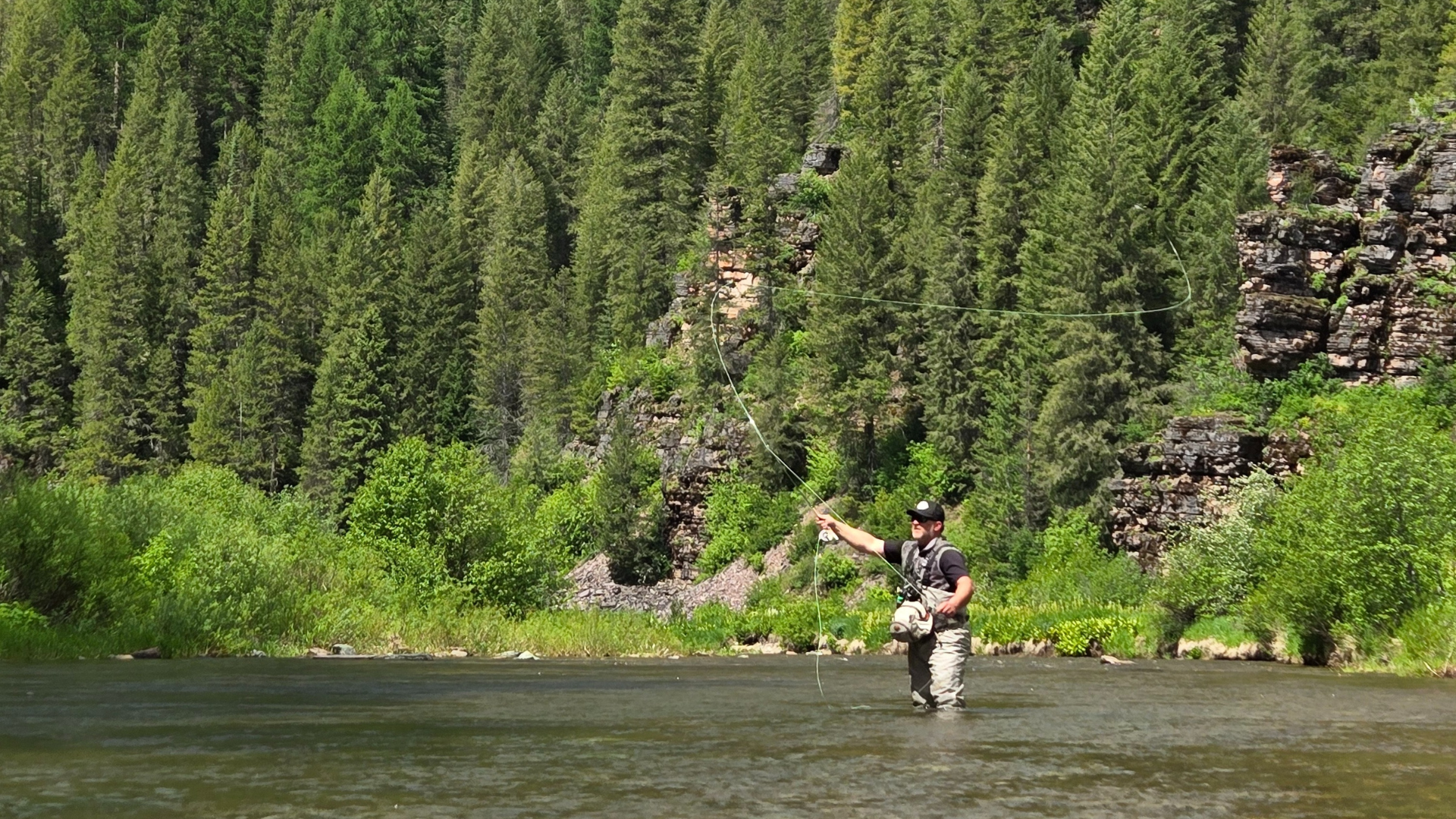Back in February 2024, I was approached by Jim Huntsman of the Western Huntsman podcast (An affiliate of Eastman’s Hunting Journal)who offered to take me on a bear hunt if I could make it out to Idaho. Jim and I have spoken online a few times and I was his guest on his podcast in the past. Without hesitation, I told him I would and in June 2024, I spent 4 days with him in the Idaho woods to notch my bear tag. The trip was educational for both of us as I had never hunted bear and Jim wasn’t used to hanging with someone with a bushcraft background like mine. The trip was just as entertaining as it was educational and I’m already lining up part 2. For now, here’s a bit of the back story of part 1.
Training and Kitting Up
From February to June, I had roughly 4 months to get geared up and trained up. I’m a seasoned whitetail hunter here on the east coast and I’ve hunted in different environments including elevation and arid climates. Idaho is mountainous terrain and where we were headed was filled with plenty of blowdowns. Hiking around in terrain like that is like doing one-legged squats and that is exactly what I did with my weights at home. I also spent time working with my rifle, a Sako Adventure 90 in 300 Win Mag, and the ammo the company sent me. I was confident in how the rifle performed with and without the suppressor as well as how it performed mounted to a Spartan Precision Tripod I acquired the year before. Prior to the trip, I loaded my pack with the gear I would carry and it all rode well on my back. We planned to camp in a nearby campground and make daily trips to the hunting grounds. After some careful trip planning including some price shopping for airline flights, I found an incredibly inexpensive flight to Spokane and an ever-slightly more expensive flight back. All I had to do was wait from that point.

On the Ground
My flight left the Raleigh Durham airport at 5 am meaning I had to be up at 2 am to make the hour drive there ahead of time. After a 3 and a 3-and-a-half-hour flight to Denver, it was another 2 hours to Spokane. When I landed, Jim picked me up and we made the 2-hour trip to his hunting grounds. Along the way, we stopped for some provisions and we picked up some gear at his house. We drove along an alternative and less direct route from his house to the campground as the preferred route was still muddy and snowed in (yes, even in the middle of June). We set up our camp and with a few hours of daylight left, we went to the bait site. You might be wondering, what is a bait site? In Idaho, bait sites are essentially a 55-gallon drum lashed to a tree and filled with an attractant. These barrels are monitored for certain periods of time in the spring and fall when the seasons are open and they are left unbaited during the rest of the year. They are capable of attracting not only the black bear we were after but also skunks, raccoons, squirrels, and even grizzly bear. We would sit in close proximity to the bait site and hope the grizzlies wouldn’t come too close to us before finding the bait. If they did, we’d shoot the barrel and do what we could to scare them off. Since bear hunting is all about scent, we would only spend a couple hours each day waiting on the site and we would leave when the time was up to avoid putting too much of our own scent in the air and on the ground. Getting to the site, we had to hike thick and I mean THICK woods. We did this a couple times a day and we approached the site with caution knowing anything could be on it. Despite doing it all right including being mindful of both sound and wind, we never spotted a bear. Jim hypothesized he should have let the bear bait barrel sit longer. Despite not taking a bear, I learned a lot about the process and can say my gear didn’t fail me. I wish I could have taken a bear but there’s no guarantee for success in hunting unless you’re going to a high fence preserve with guides radioing animal locations.

Fishing Too
One of the draws of Idaho bear hunting is the opportunity to fish incredible water when you’re waiting to go back to the bear site. On day 2, I caught my first cutthroat of the trip not far from where we camped. Jim used his fly rod and I took my spinning rod that I have enjoyed traveling with. On the third day, Jim and I loaded up our backpacks and hiked downriver to look for spots where the fish were less pressured. Along the way, we crossed the river we camped along multiple times. We discovered an elk shed underwater that was hollowed out and on the river bed for God knows how long. We stumbled on an absolute honey hole and fished it for an entire day. We both had a few catch and involuntary releases thanks to barbless hooks. Those cutthroat that were successfully landed were released without issue. One particular stretch of river was swift-moving and rocky but it was home to plenty of fish that took our flies and spinners as long as we didn’t let the subsurface branches and green vegetation take them first. We used the time on the river to discuss the status of the bear hunt, the fortune we both have for being able to recreate in that environment and plans for the next one.

What’s Next
While we didn’t tag out this trip, we made plans to address that unfinished business this fall. Turns out, the Idaho bear tag I purchased isn’t just good for spring bear but fall as well. In that season, some things will stay the same and some will change. The days will be shorter, the weather will be colder, and the bears will be heavier. Until then, I’ll use the 4 months leading up to that hunt to do much of what I did on this one. I’ll keep up on my rifle shooting, make sure my Crispi boots are properly maintained, search for cheap flights again, and keep up with my new friend and western hunting partner, Jim Huntsman. If you’d like to keep up with him, follow him on Instagram @thewesternhuntsman. Until that trip back out west, I’ll continue to cross-train, instruct, and obsess over more time in the woods. My body will be wherever I am but my mind will be somewhere else.
